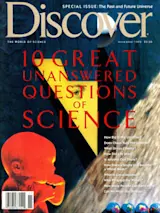Reconstructing the events that got prehistoric humans all over the globe is like keeping a litter of puppies in a basket. Every time order seems imminent, some crucial element wriggles away.
The potential chaos has different guises. Sometimes a new laboratory technique upends the conventional wisdom, then is itself upended. Sometimes a new archeological site rattles an old timetable, then slinks, invalidated, into obscurity. Sometimes a specialist from another discipline looks at the problem and says, in effect, Sorry to be a nuisance, but according to what we know in our department, your solution can’t possibly be right.
All these things, and more, have happened in the last decade. Brush fires--to change metaphors--have flared on every continent.
For Old World prehistorians the heat has been fairly intense for the past five or six years. At issue has not been whether the earliest hominids evolved in Africa 3 million to 4 ...














